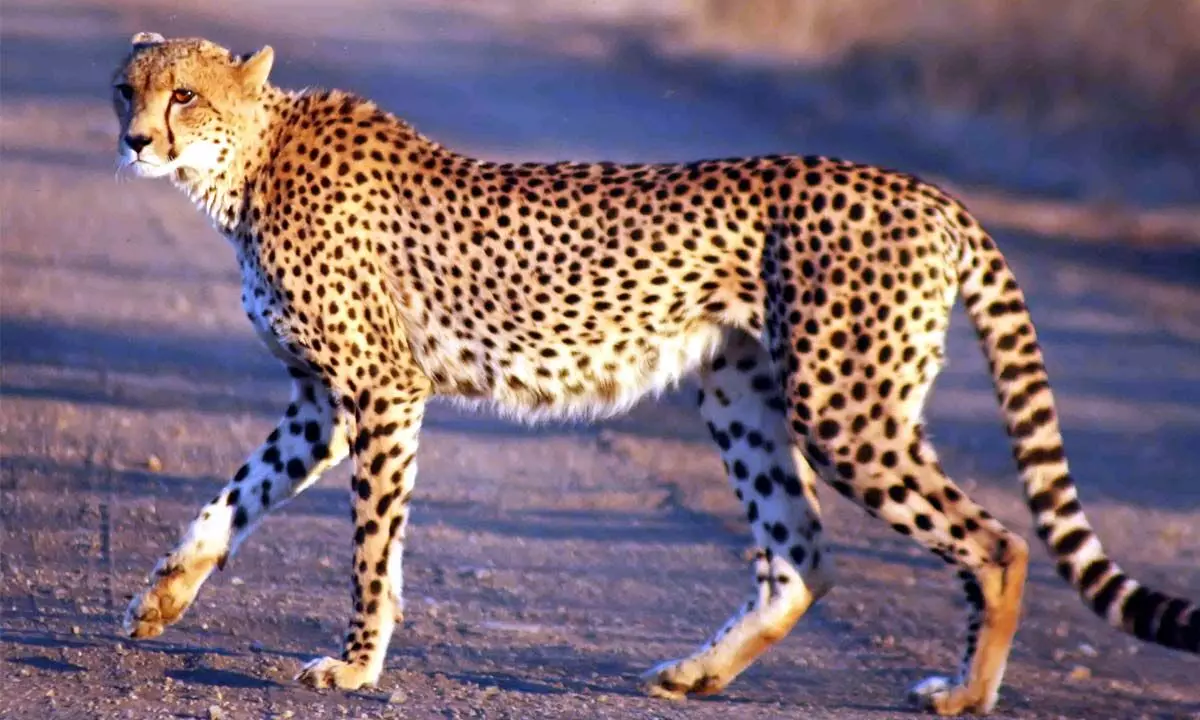What are the major reason for a species to become endangered one?

Representational image
- An endangered species are those species which are threatened to get extinct soon
- The two major reason include loss of habitat and the next one is loss of genetic variation.
A loss of habitat can happen naturally, for example, Dinosaurs, lost their habitat about 65 million years ago. The hot as well as dry climate of the Cretaceous period changed very quickly, most likely due to an asteroid striking the earth. The impact of the asteroid forced the debris into the atmosphere, thus reducing the amount of light as well as heat that reached the earth. The dinosaurs were unable to adapt to this new, cooler habitat. Dinosaurs became endangered, then extinct.
Human activity can result in loss of habitat
Yes, human activity can result in loss of habitat. Development of housing, industry and agriculture reduces the habitat of native organisms. This can happen in a number of different ways.
Development can eliminate habitat and native species directly
Development can eliminate habitat and native species directly. In the Amazon rain forest of South America, Developers have cleared hundreds of thousands of Acres. To clear a piece of land is to remove all trees and vegetation from it. The Amazon rain forest is cleared for cattle ranches, logging and urban use. Development does endanger species indirectly. Few species, such as fig trees of the rain forest, might offer habitat for other species. As trees are destroyed, species might depend on that tree habitat might also become endangered. Tree crown provide habitat in the canopy or top layer of a rainforest.
Plants such as vines, fungi such as mushrooms and insects such as butterflies live in the rain forest canopy. So do we find hundred of species of tropical birds and mammals such as monkeys. As trees are cut down, this habitat is lost. Species have less room to live and reproduce.
Loss of habitat might happen as the development takes place in a species range
Loss of habitat might happen as the development takes place in a species range. Numerous animals have got a range of hundreds of square kilometers. The Mountain lion of North America, for instance, has got a range of up to 1000 square kilometers. To successfully live as well as reproduce, a single mountain lion patrols this much territory.
Urban areas such as Los Angeles, California and Vancouver, British Columbia, Canada, grew rapidly during the 20th century. As these areas expanded into the wilderness, the mountain lion’s habitat became smaller. In other words habitat can only support fewer mountain lions. As enormous parts of Sierra Nevada, Rocky and Cascade mountain ranges remain undeveloped, however mountain lions are not endangered.
Loss of habitat might lead to increased encounters between the wild species and people
Loss of habitat might lead to increased encounters between the wild species and people. As the development brings people deeper into a species range, they might have more exposure to wild species. Poisonous plants and fungi might grow closer to homes and schools. Wild animals are spotted more frequently. The wild animals simply patrol their range. But interaction with people can be deadly. Polar bears, mountain lions and alligators are predators brought into close contact with people as they lose their habitat to homes, farms and businesses. As people kill these wild animals, through pesticides, accidents such as collision with cars or hunting, native species might become endangered.
inbreeding
Inbreeding is reproduction with close family members. Groups of species, which have tendency to inbreed usually have a very little genetic variation, as no new genetic information is introduced to the group. Disease is much more common and much more deadly, among inbred groups. Inbred species do not have the genetic variation to develop resistance to the disease. For this reason, fewer offspring of inbred groups survive to maturity.
Loss of genetic variation can occur naturally
Loss of genetic variation can occur naturally. Cheetahs are threatened species native to Africa and Asia. Thes big cats have a very little genetic variation. Biologists state that during the last ice age, Cheetah’s went through very few genetic differences between cheetah’s they cannot adapt to changes in the environment as quickly as other animals and fewer cheetahs survive to maturity. Cheetahs are also much more difficult to breed in captivity than other big cats, such as lions.
.Human activity might also lead to loss of genetic variation.
Human activity might also lead to loss of genetic variation. Overhunting and overfishing have reduced the populations of numerous animals. Reduced population means, there are few breeding pairs. A breeding pair is made up of two mature members of the species that are not closely related and produce healthy offspring. With fewer breeding pairs, genetic variation shrinks.
monoculture
Monoculture, the cultural method of growing a single crop, can reduce the genetic variation. Modern agribusiness relies on monocultures. Almost all potatoes cultivated, sold and consumed, for instance, are from a single species, the Russet Burbank. Potatoes, native to the Andes Mountain of South America, have got dozens of natural varieties. The genetic variation of the wild potatoes allows them to adapt to climate change and disease. For Russet Burbanks, however, the farmers must use fertilizers and pesticides in order to ensure the healthy crops because the plant has almost no genetic variation.
The plant breeders often tend to go back to the wild varieties to collect genes which would help cultivated plants resist pests and drought and adapt to climate change. However, climate change is also threatening wild varieties. In other domesticated plants might lose an important source of trait which would help them overcome new threats.

















